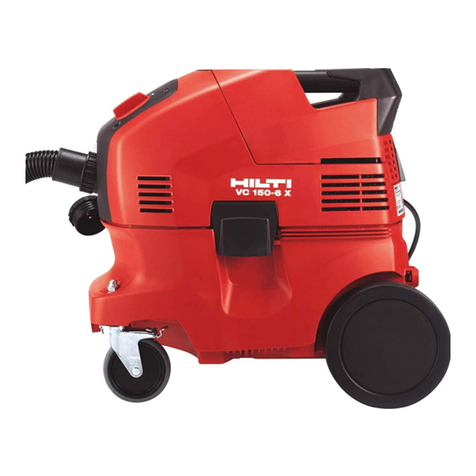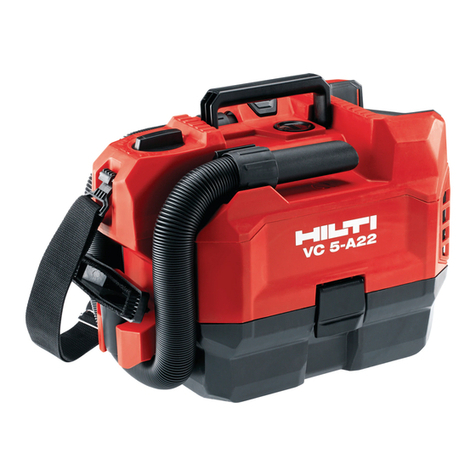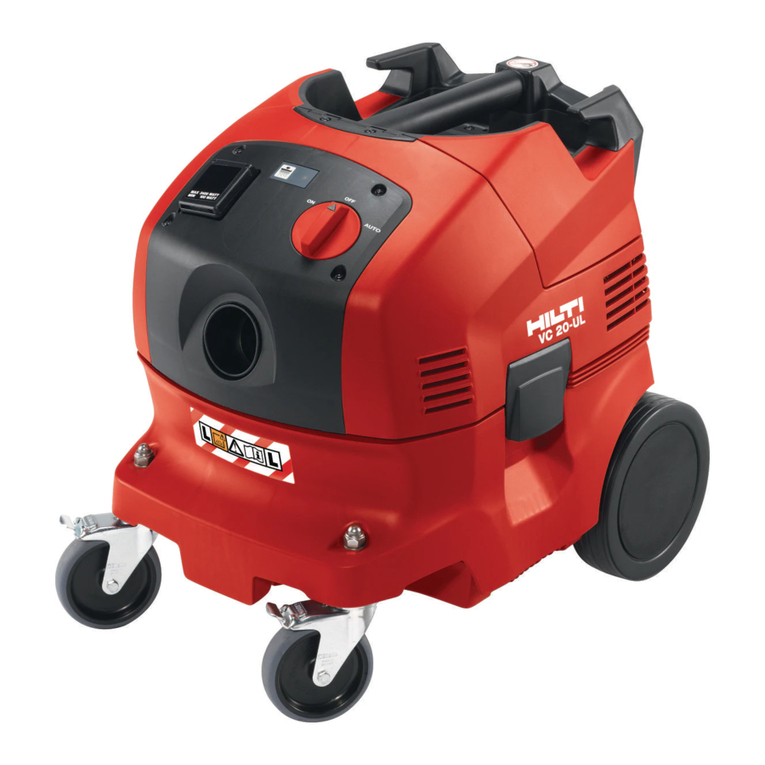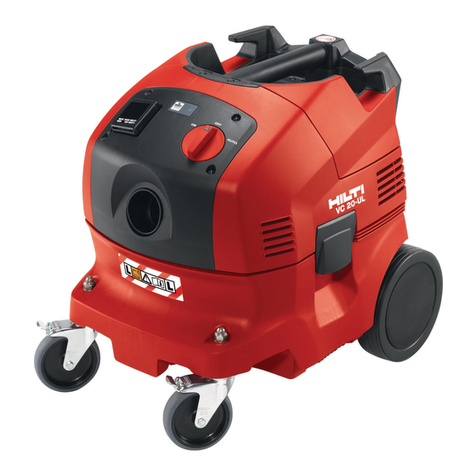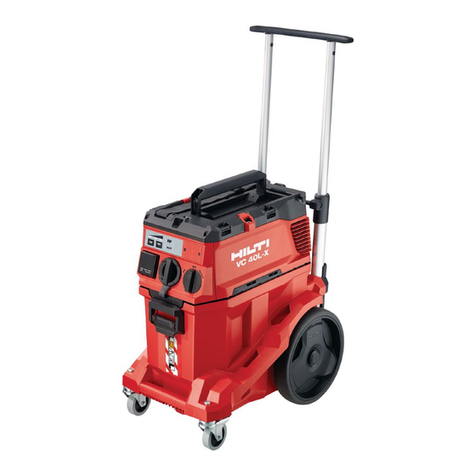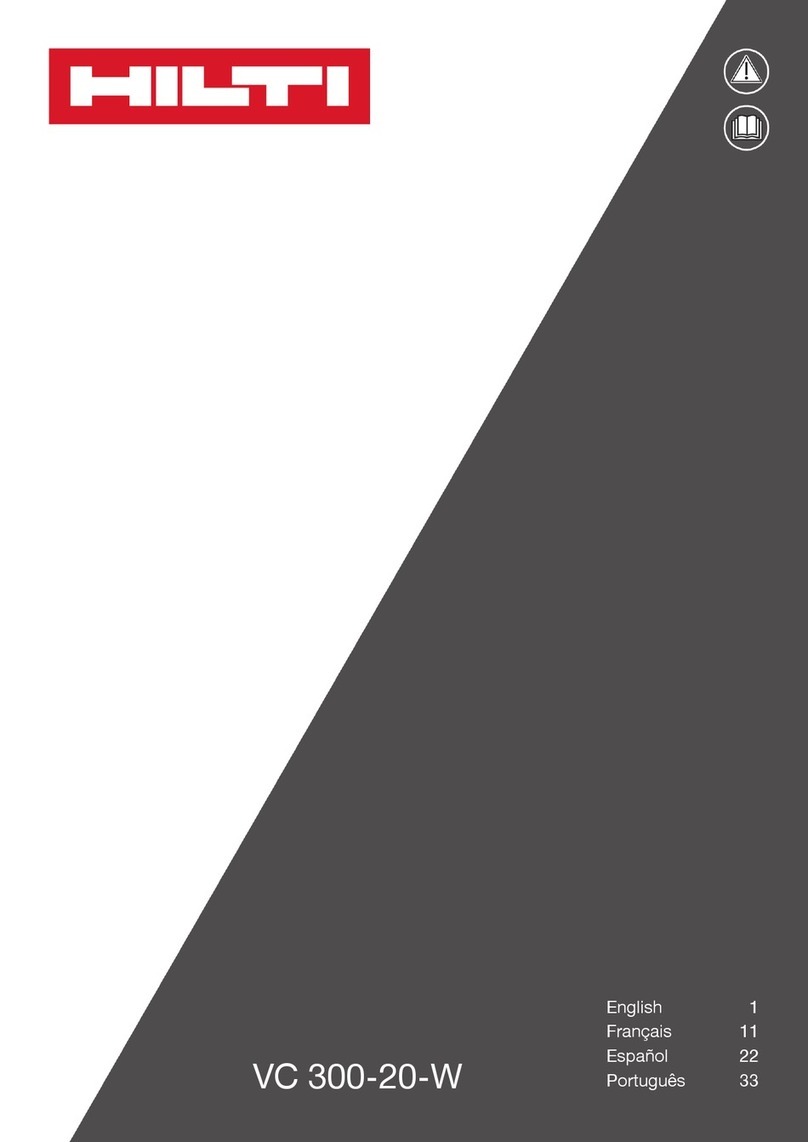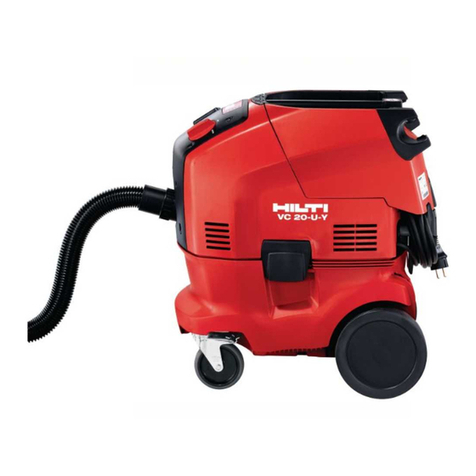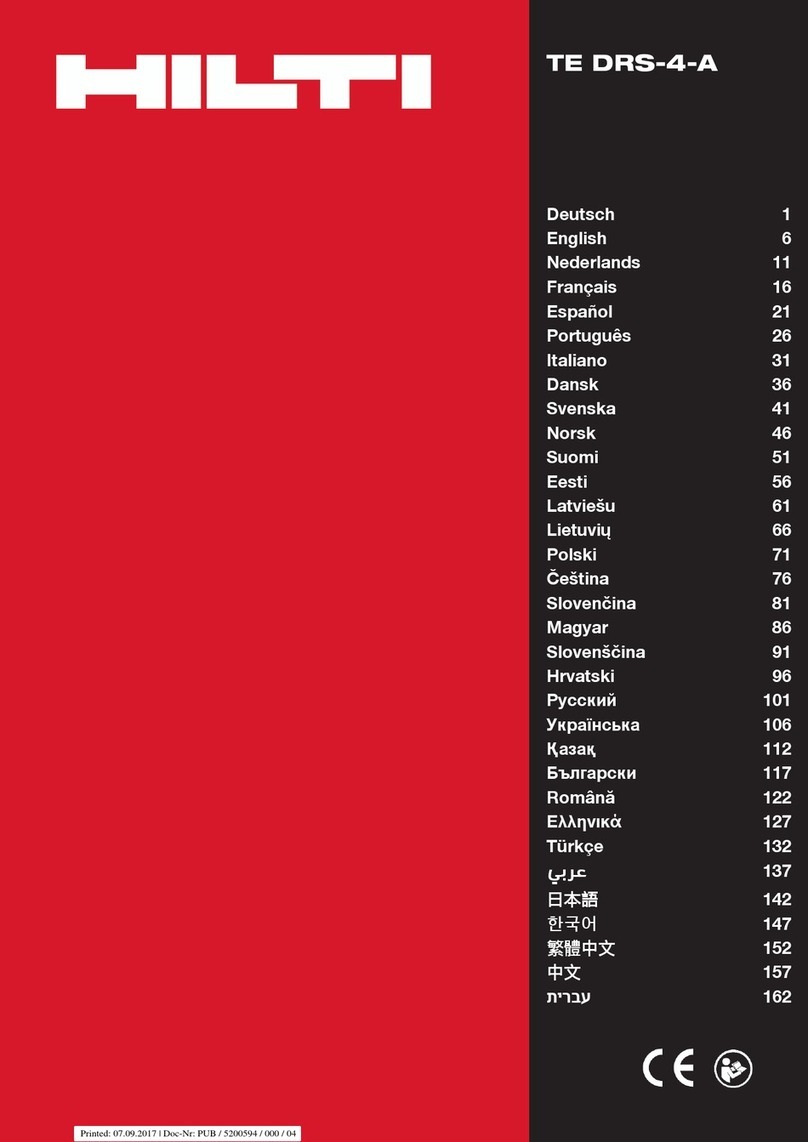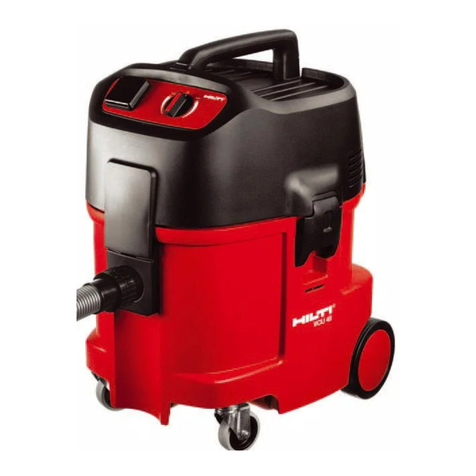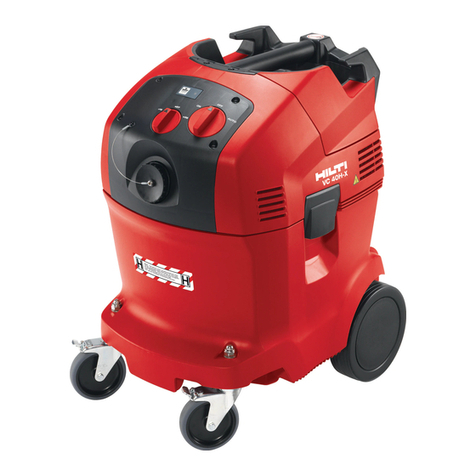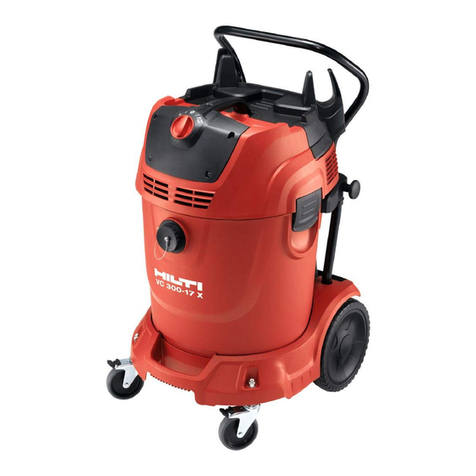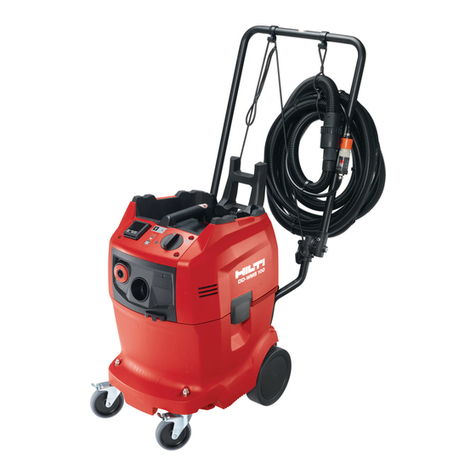
g) Use only as described in this manual.
Use only manufacturer’s recommended
attachments.
h) Do not use with damaged cord or plug.
If appliance is not working as it should,
has been dropped, damaged, left out-
doors, or dropped into water, return it to
a service center.
i) Do not pull or carry by cord, use cord as
a handle, close a door on cord, or pull
cord around sharp edges or corners. Do
not run appliance over cord. Keep cord
away from heated surfaces.
j) Do not unplug by pulling on cord. To
unplug, grasp the plug, not the cord.
k) Do not handle plug or appliance with wet
hands.
l) Do not put any object into openings. Do
not use with any opening blocked; keep
free of dust, lint, hair, and anything that
may reduce air flow.
m) Keep hair, loose clothing, fingers, and all
parts of body away from openings and
moving parts.
n) Turn off all controls before unplugging.
o) Use extra care when cleaning on stairs.
p) Do not use to pick up flammable or com-
bustible liquids, such as gasoline, or use
in areas where they may be present.
q) Do not pick up anything that is burning
or smoking, such as cigarettes, matches,
or hot ashes.
r) Do not use without dust bag and/or filters
in place.
5.2 Requirements to be met by users
a) Stay alert, watch what you are doing and
use common sense when operating the
appliance. Do not use the appliance while
tired or under the influence of drugs, al-
cohol or medication. A moment of inatten-
tion while operating appliances may result
in serious personal injury.
b) Dress properly. Do not wear loose cloth-
ing or jewellery. Keep your hair, cloth-
ing and gloves away from moving parts.
Loose clothes, jewellery or long hair can be
caught in moving parts.
c) Use personal protective equipment.
Always wear eye protection. Protective
equipment such as dust mask, non-skid
safety shoes, hard hat, or hearing
protection used for appropriate conditions
will reduce personal injuries.
d) If devices are provided for the connec-
tion of dust extraction and collection fa-
cilities, ensure these are connected and
properly used. Use of dust collection can
reduce dust-related hazards.
e) The machine is intended for professional
use.
f) The machine may be operated, serviced
and repaired only by authorized, trained
personnel. This personnel must be in-
formed of any special hazards that may
be encountered.
5.3 Proper organization of the work area
a) Ensure that the workplace is well lit.
b) Ensure that the workplace is well ven-
tilated. Exposure to dust at a poorly ven-
tilated workplace may result in damage to
the health.
c) Keeptheworkareatidy.Anyobjects
which may cause injury should be re-
moved from the area. Untidiness at the
workplace can lead to accidents.
d) Store appliances out of reach of children
when not n use. Do not allow persons
unfamiliar with the appliance or these
instructions to operate it. Appliances are
dangerous in the hands of untrained users.
e) Keep children and other persons away
fromtheareawhiletheapplianceisin
use. Distractions can cause you to lose
control.
f) Do not operate the appliance in explosive
atmospheres, such as in the presence of
flammable liquids, gases or dust. Electric
appliances cause sparks which may ignite
the dust or fumes.
g) Do not allow other persons to touch the
appliance or the extension cord.
h) Avoid unusual body positions. Make sure
you work from a safe stance and stay in
balance at all times.
i) Wear non-skid shoes.
en
6
Printed: 08.07.2013 | Doc-Nr: PUB / 5129763 / 000 / 01




